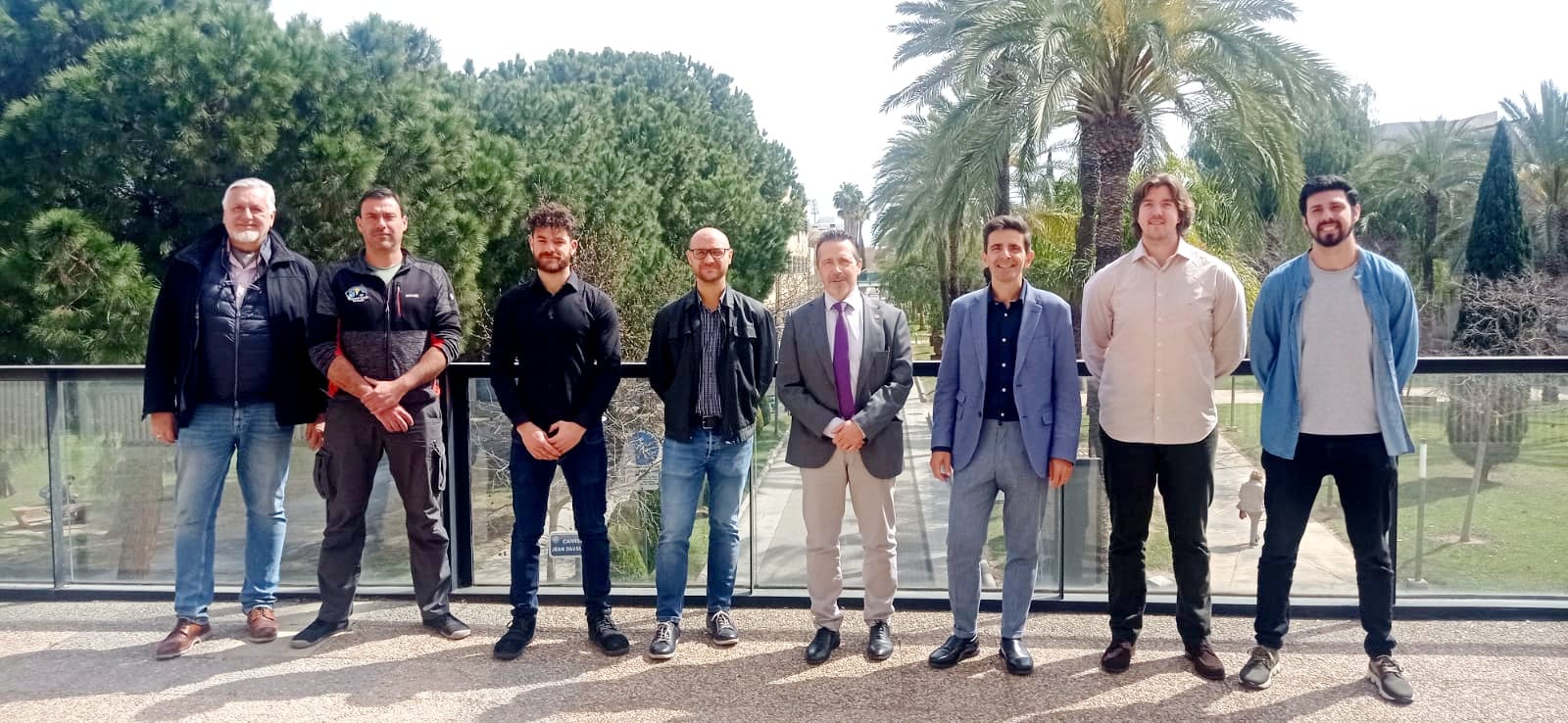Applying Artificial Intelligence Models, Sensing Tools generates digital twins that measure socioeconomic and environmental interaction and help decision making in companies and administrations.
The company arises from the “Spin UPV” program that accompanies research and entrepreneurial talent to the creation of spin-offs with UPV seal.
The Universitat Politècnica de València adds a new spin-off to its entrepreneurial ecosystem. It is SensingToolsThe first one to be created as a result of the public-private collaboration between the UPV and the company TRL+, whose objective is to contribute to convert research projects of universities and technology centers into sustainable and scalable companies. Applying Artificial Intelligence models, Sensing Tools generates digital twins that measure socioeconomic and environmental interaction and help decision making in companies and administrations.
This new spin-off arises from the work done by a group of four researchers from the Computer Networks Group (GRC) of the Department of Computer and Systems Informatics (DISCA), one of the most powerful of the UPV in the field of digitization, integrating areas such as the Internet of Things, Artificial Intelligence (AI) and High Performance Computing (HPC).
During the last few years, the GRC-DISCA team has developed a technology, which they now bring to the market, capable of integrating data produced by any type of physical sensor or open data source (IoT, remote sensing, open data,…), together with citizen opinions, expressed in digital media such as social networks, newspaper news, and other media, and processed using Natural Language Processing (NLP) and Social Media Analytics (SMA) techniques to turn them into what they call “social sensors”.
Thus, by applying AI models on this common database, Sensing Tools is able to generate a digital twin of socio-economic and environmental interactions, offering a descriptive, predictive and prescriptive view of any organization, company, system or environment “that helps to make a proactive decision making process; that is, before problems occur”.
“In Sensing Tools we integrate physical sensors together with social sensors in a single centralized database to obtain a 360-degree view of the past, present and future and generate the most interesting and quality information for decision making. All this with a visualization system adapted to the current times with a digital twin of the system, company or organization that we want to monitor and a very simple and intuitive panel that speeds up the decision making process”, highlights José Mª Cecilia, president of SensingTools and researcher of the GRC-DISCA of the UPV.
The solution created by the UPV team has already aroused interest in various sectors such as port management, smart cities, water and environmental resource management, industry 4.0 and the so-called mixed ecosystems (tourism-citizens-agriculture-industry-natural spaces) where socio-economic activities are confronted with the protection of environmental resources.
The Sensing Tools team is formed by GRC-DISCA researchers Pedro García Guillamón and Julio Fernández Pedauye, in addition to José Mª Cecilia and José Ginés Giménez Manuel, PhD student also from GRC-DISCA. This team includes Luis Morró González and Hector Fernandez Bueno as CEOs of the company, on behalf of TRL+.

A project recognized by the European Innovation Council
The origin of Sensing Tools as a company and its market orientation, arises from several European and international R+D+i projects, among which the SMARTLAGOON H2020 project stands out. In the framework of this project, the UPV team is developing a digital twin and the tool that gives its name to the company, based on physical and social sensors, for monitoring the Mar Menor lagoon. For the development of this technology the European Innovation Council (EIC) awarded the team two recognitions as “Key Innovator” that can be consulted in the Innovation Radar of the EIC.

“Spin UPV”, accompanying spin-offs to the market
With this recognition, there are now 29 companies currently active with “Spin-off UPV” seal. The company Sensing Tools recognized as a spin-off of the university was born as a result of the support received by its founders in the spin-off creation program promoted by the Vice-Rectorate for Innovation and Transfer and the Vice-Rectorate for Students and Entrepreneurship of the UPV, the Spin-Off Program “Spin UPV“.
The initiative aimed at the creation of spin-offs UPV began in 2020 with a pilot experience developed together with the Institute of Telecommunications and Multimedia Applications (iTEAM), under the name of SPIN TEAM and in order to boost its technology transfer projects in conversion to companies. This program was aimed at stimulating the creation of spin-offs in iTEAM UPV research teams, resulting in the start-up of a new spin-off company.
Given the success of the pilot test, the first edition of SPIN UPV was born in 2021 with the aim of putting in value in the market various UPV spin-offs. Thus, in the 2021 call there were eighteen projects that followed the program with very positive results.
In this line, the 2022 call for proposals brought together fourteen projects, among themSensingToolswhich has received certification by the Social Council and recognition from the university. The rest of the projects that participated and received funding in 2022 have already started with the technical development and preparation of the business plan and eight projects have selected their CEOs assigned to the program. Thus, the second edition of Spin UPV is still in the process of consolidating companies generated from talent and research.n UPV.
The 2023 edition of Spin UPV, which began last February, has ended with the formation phase of sixteen R&D+I UPV teams, which will develop the business plan to create a spin-off company.–off and go to market in the next year;
